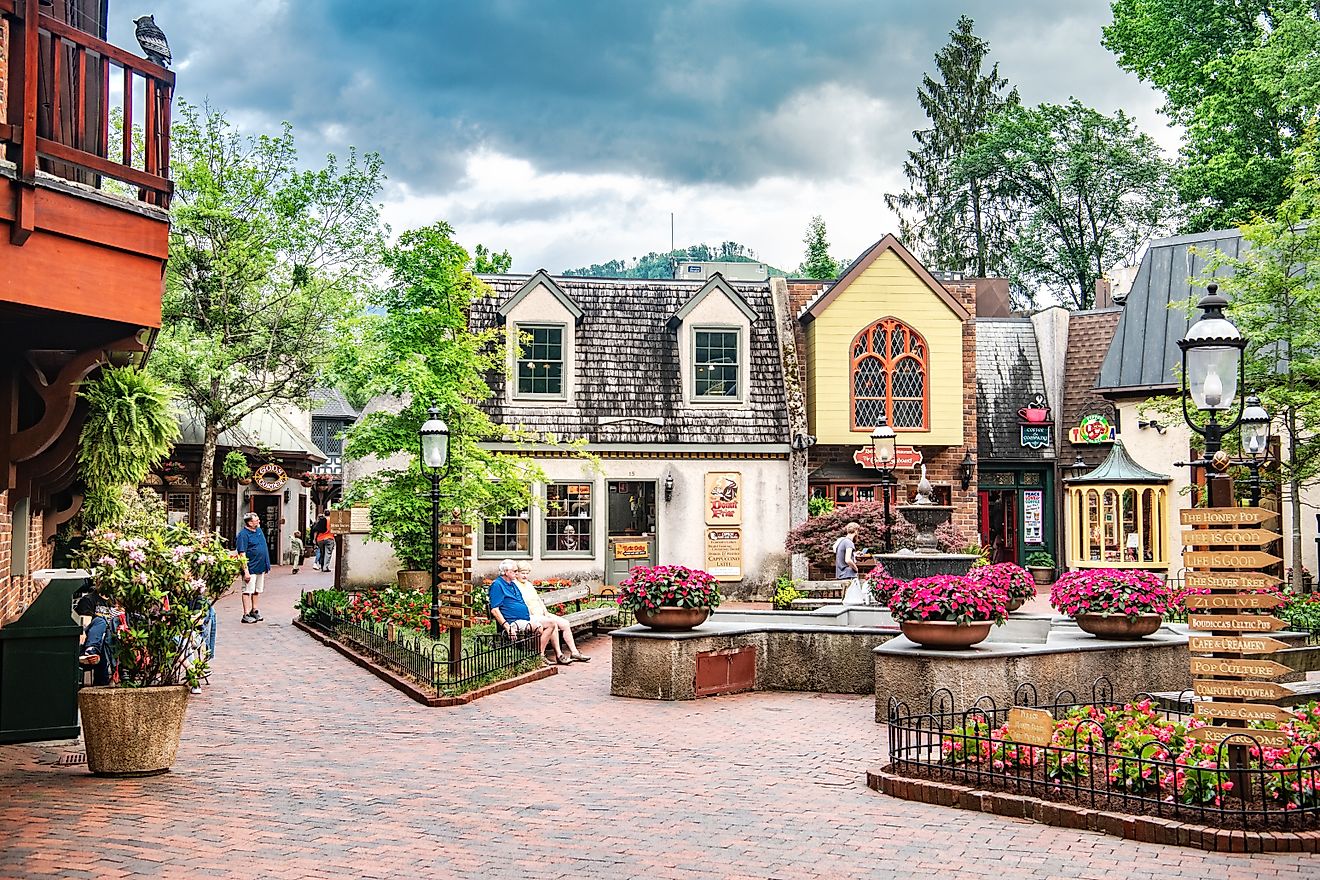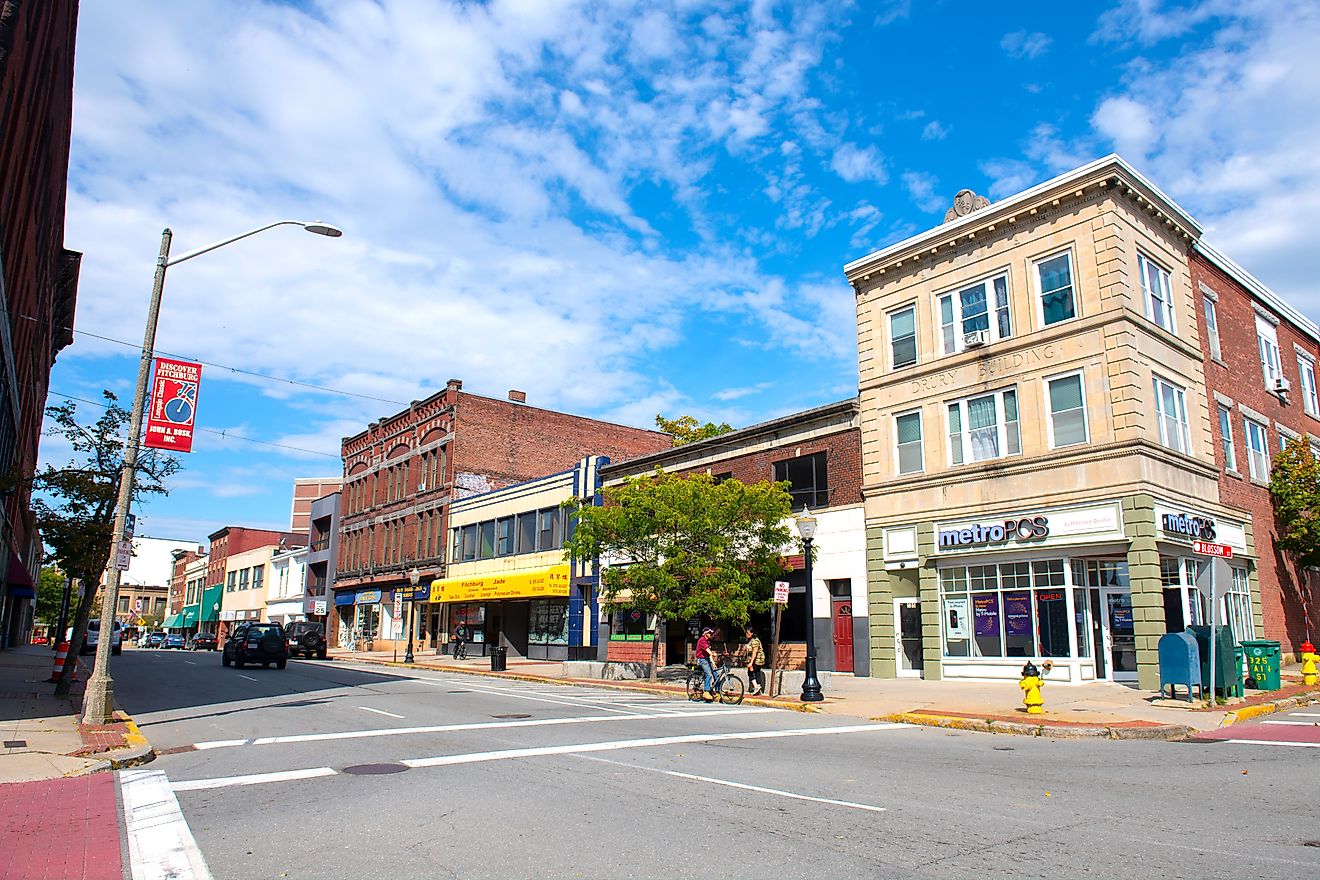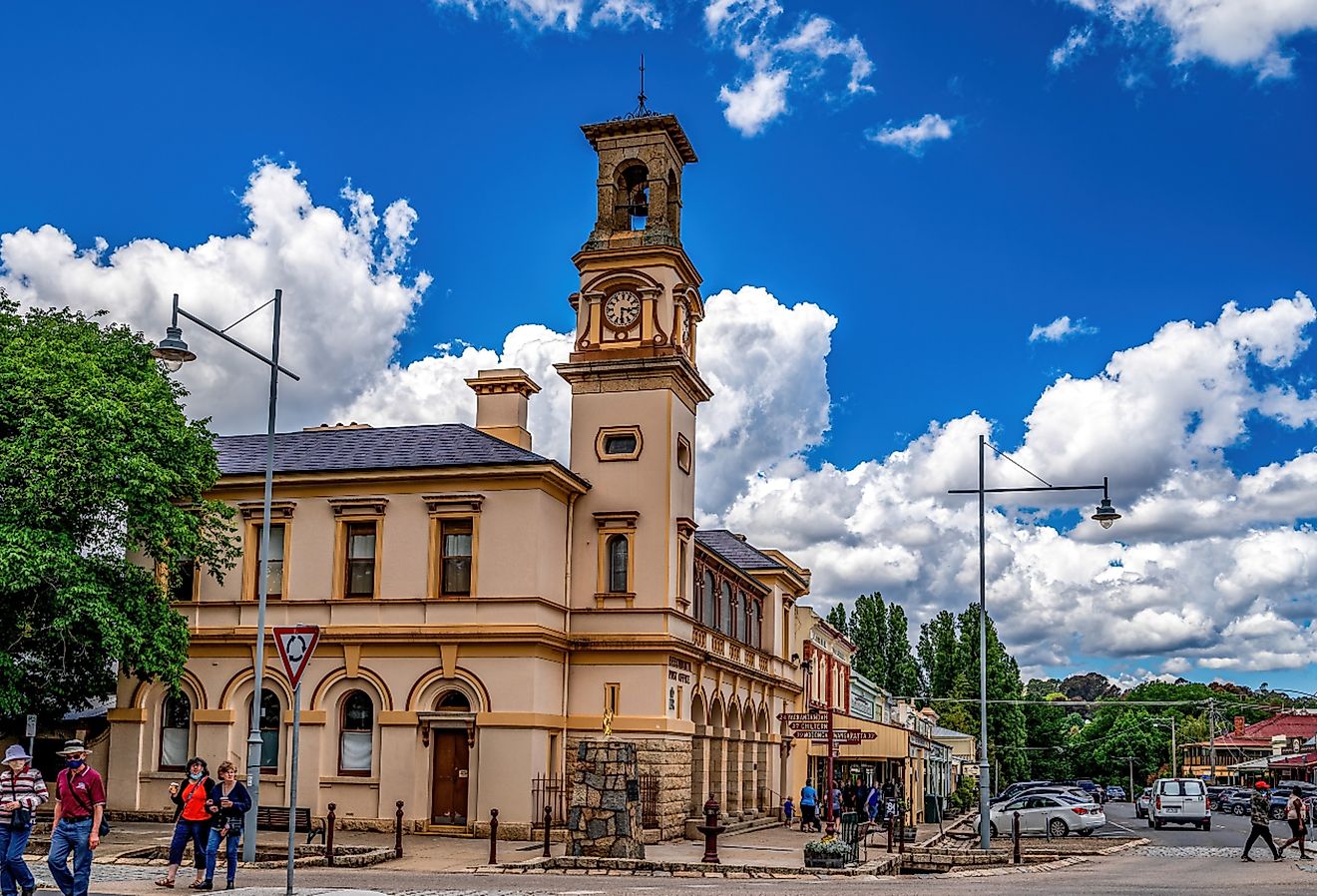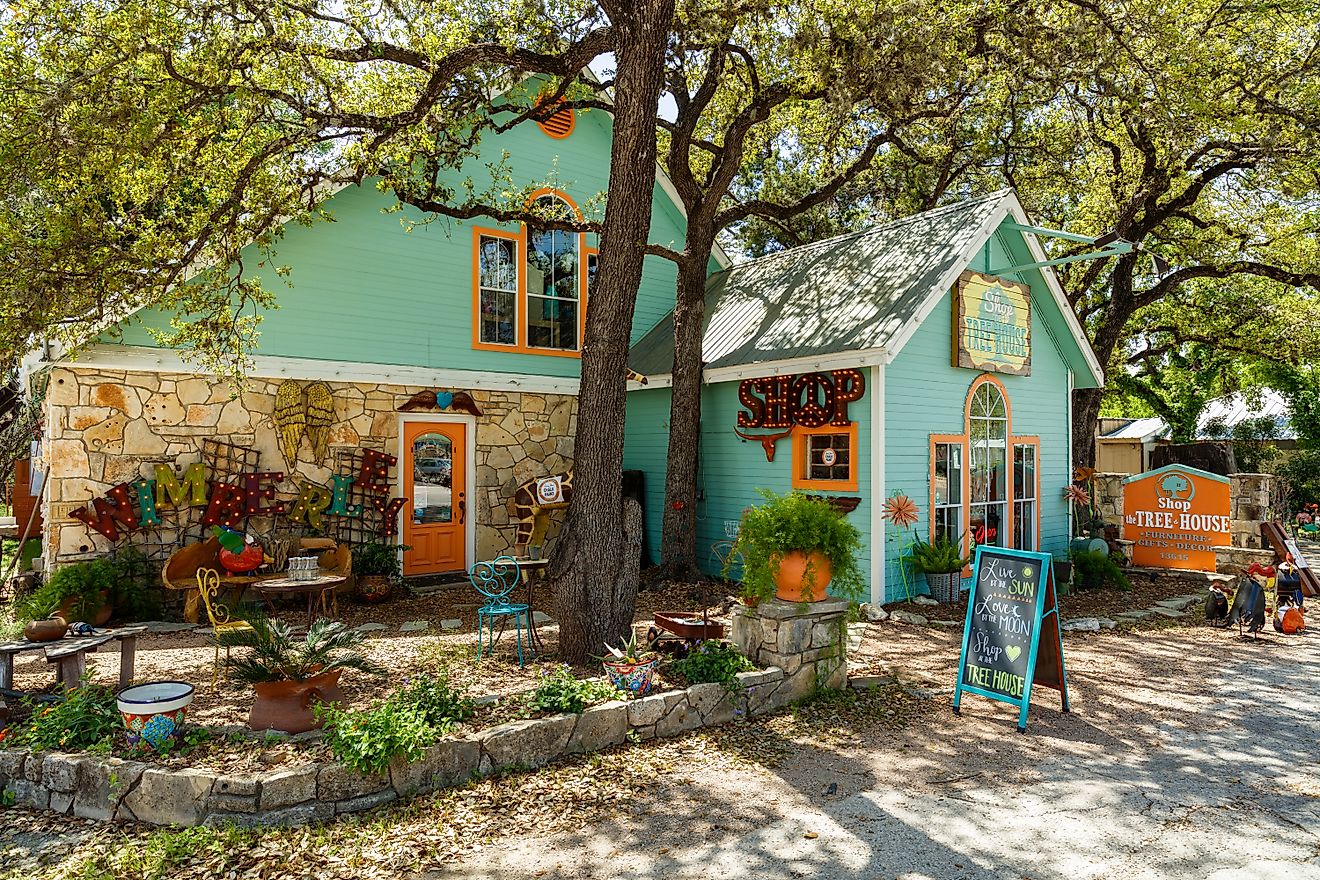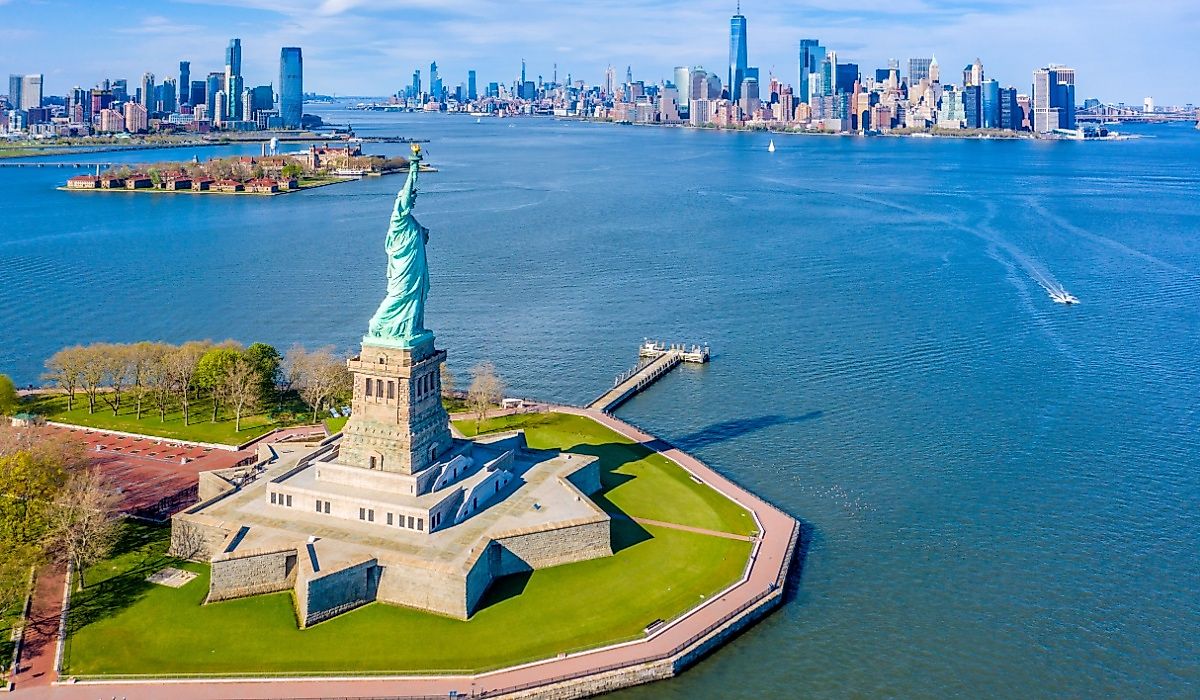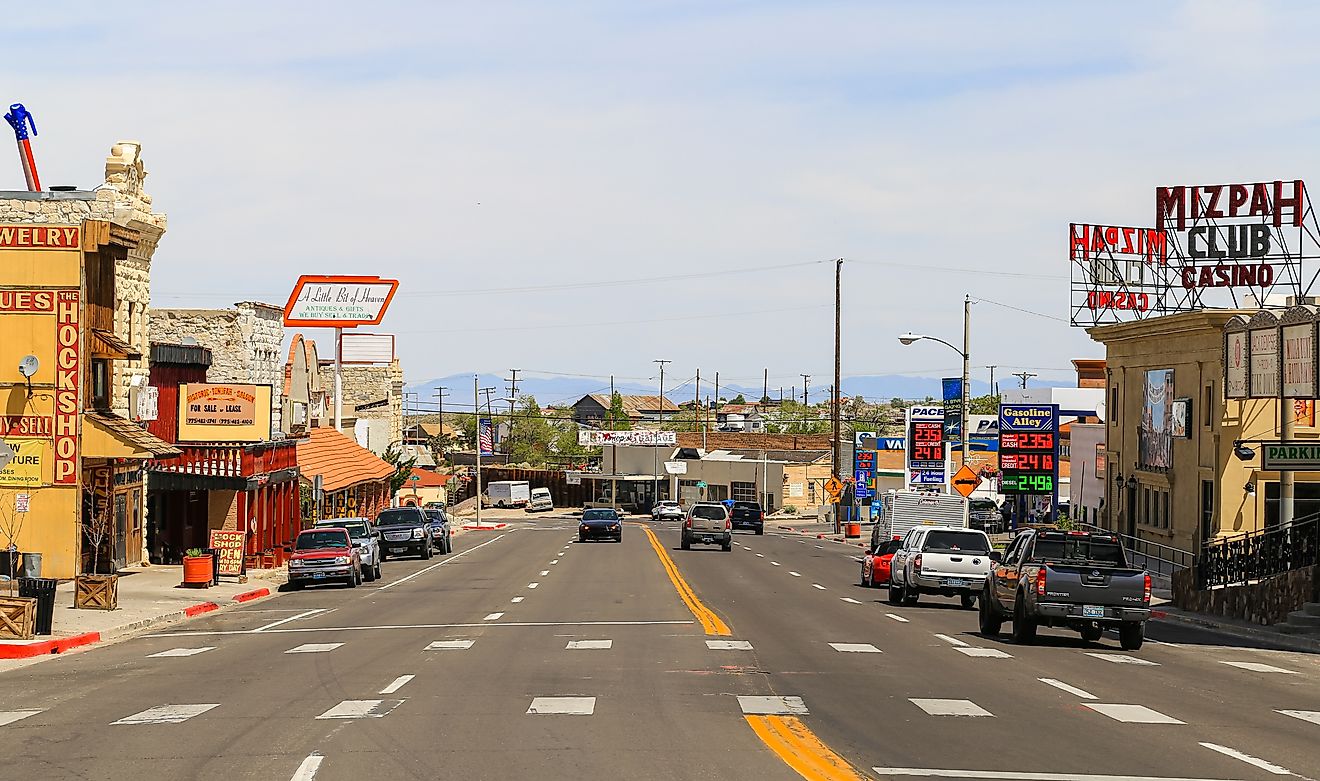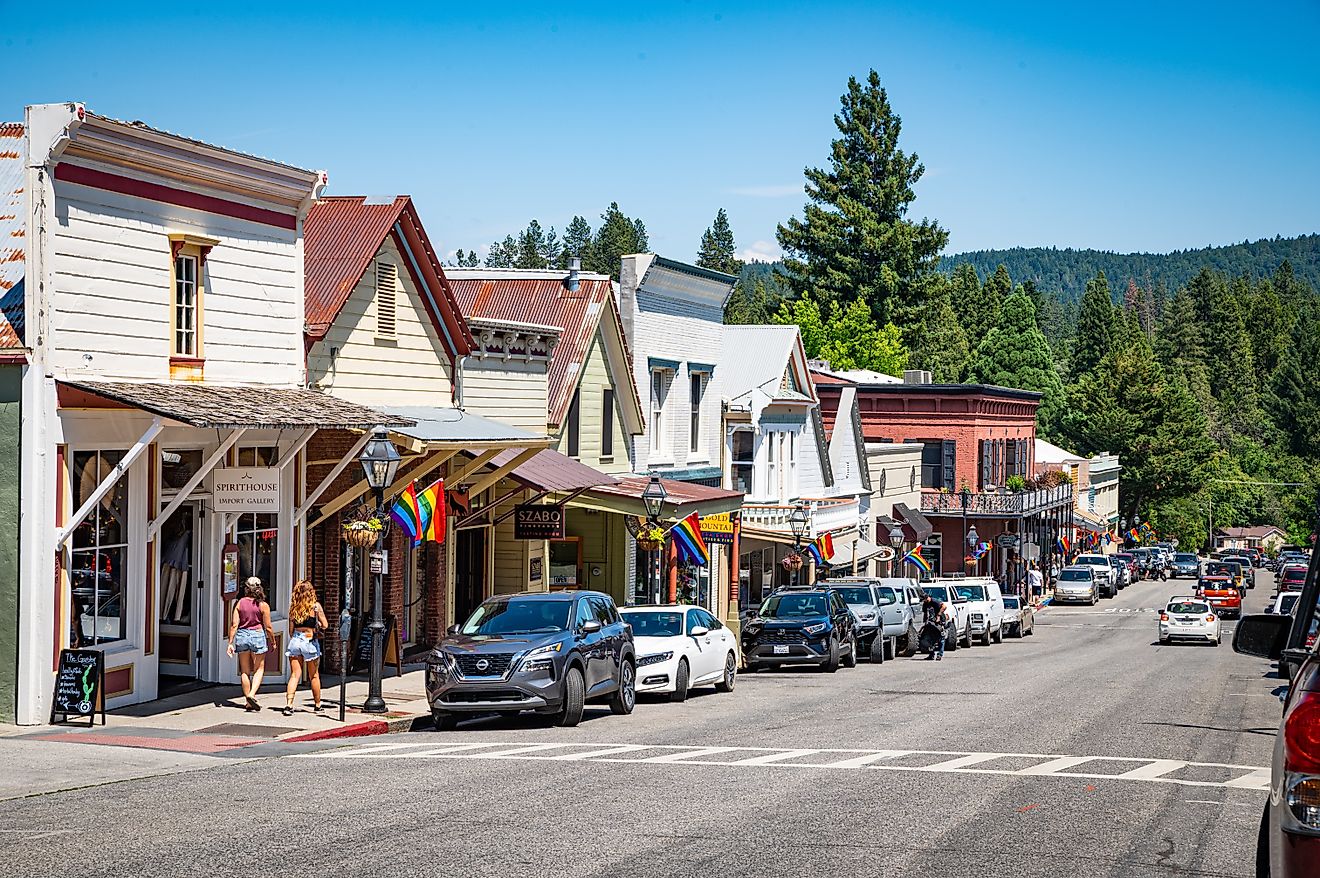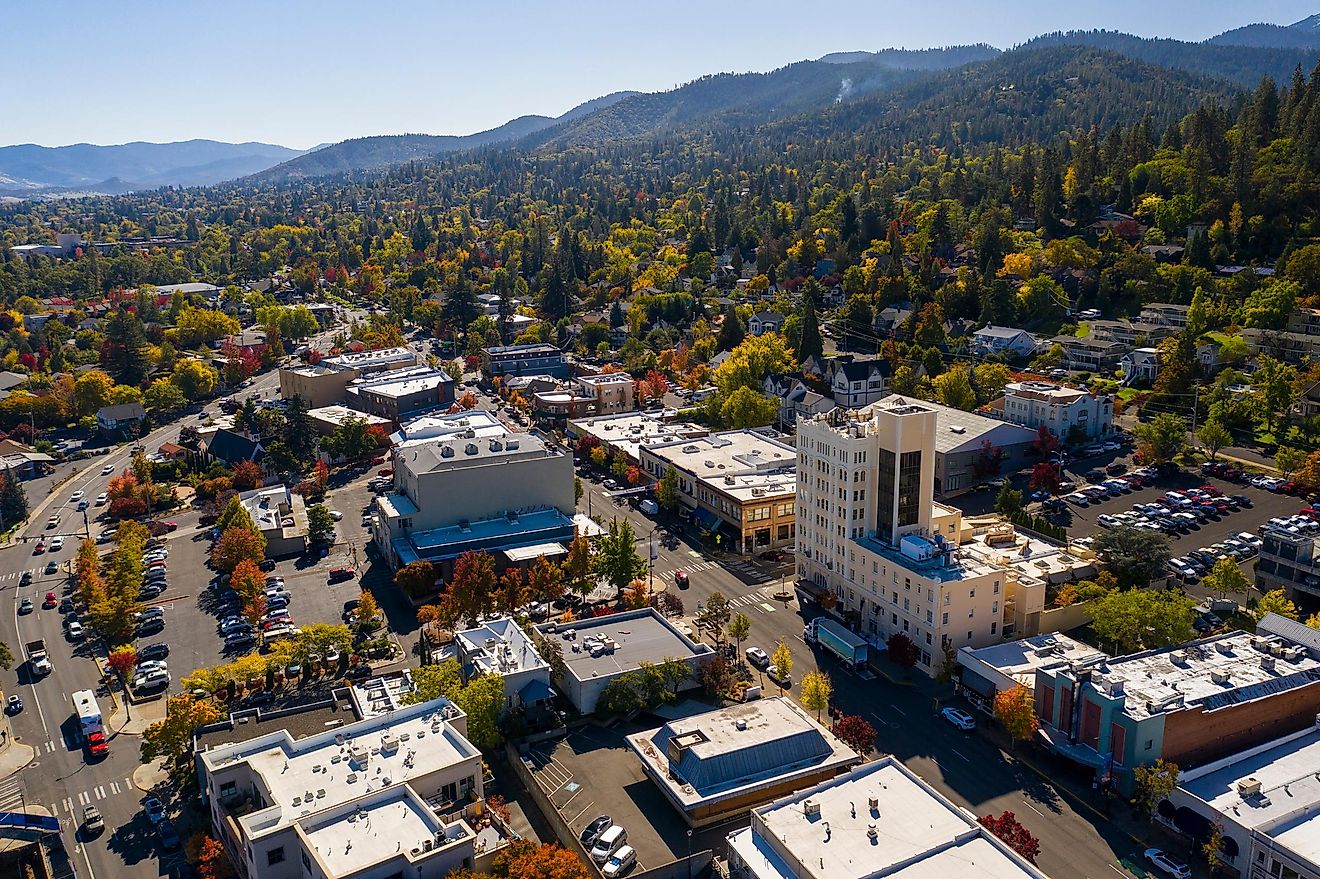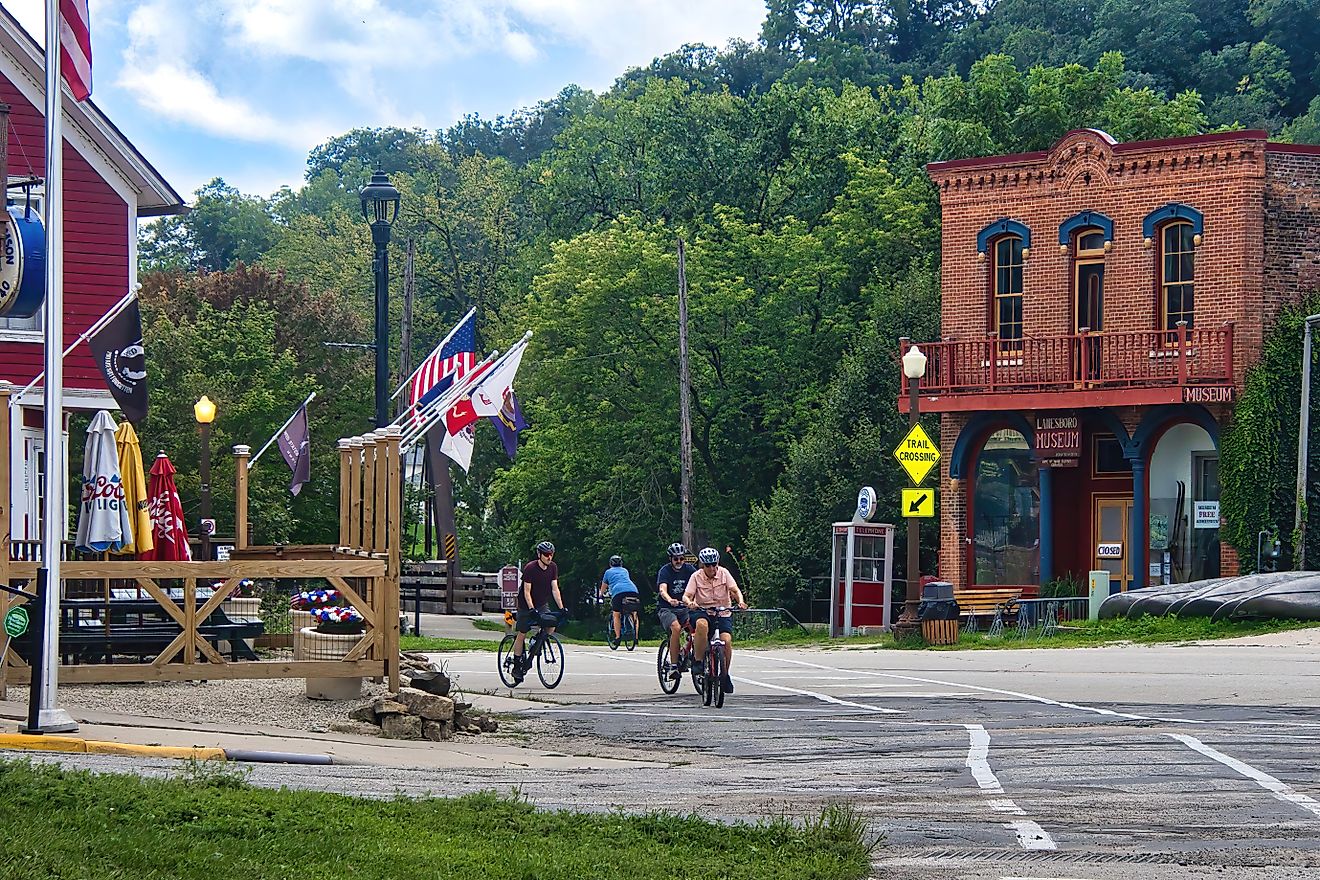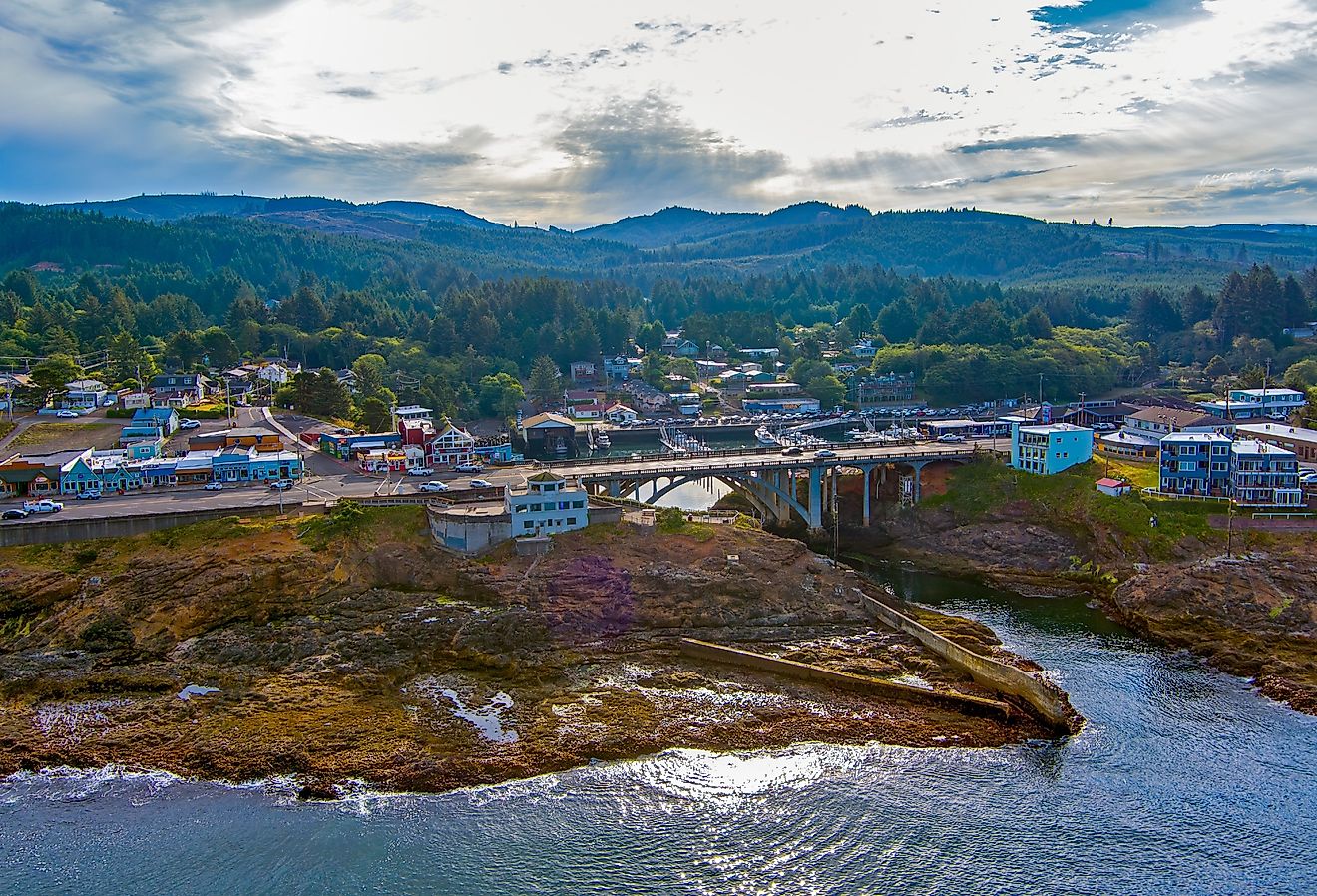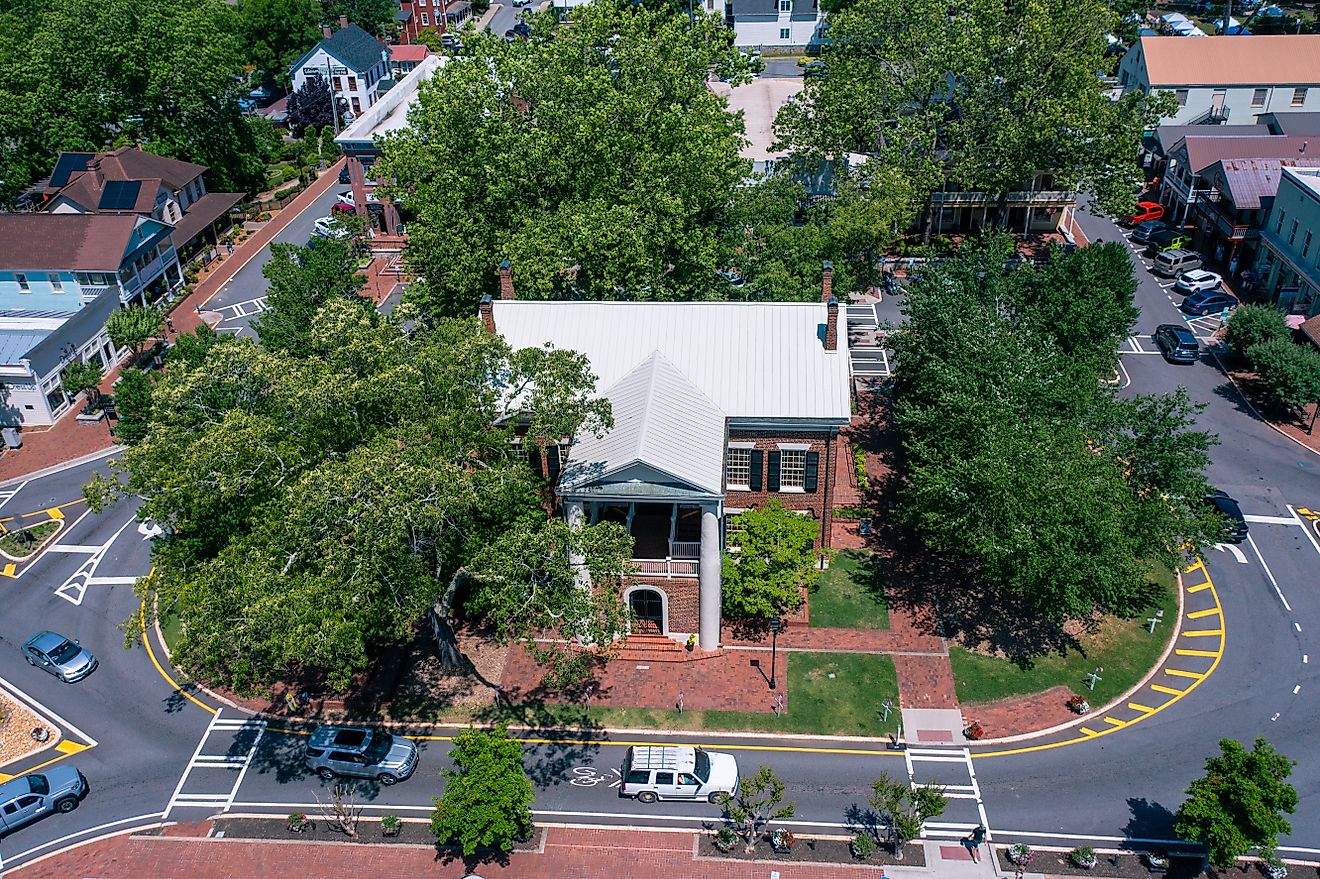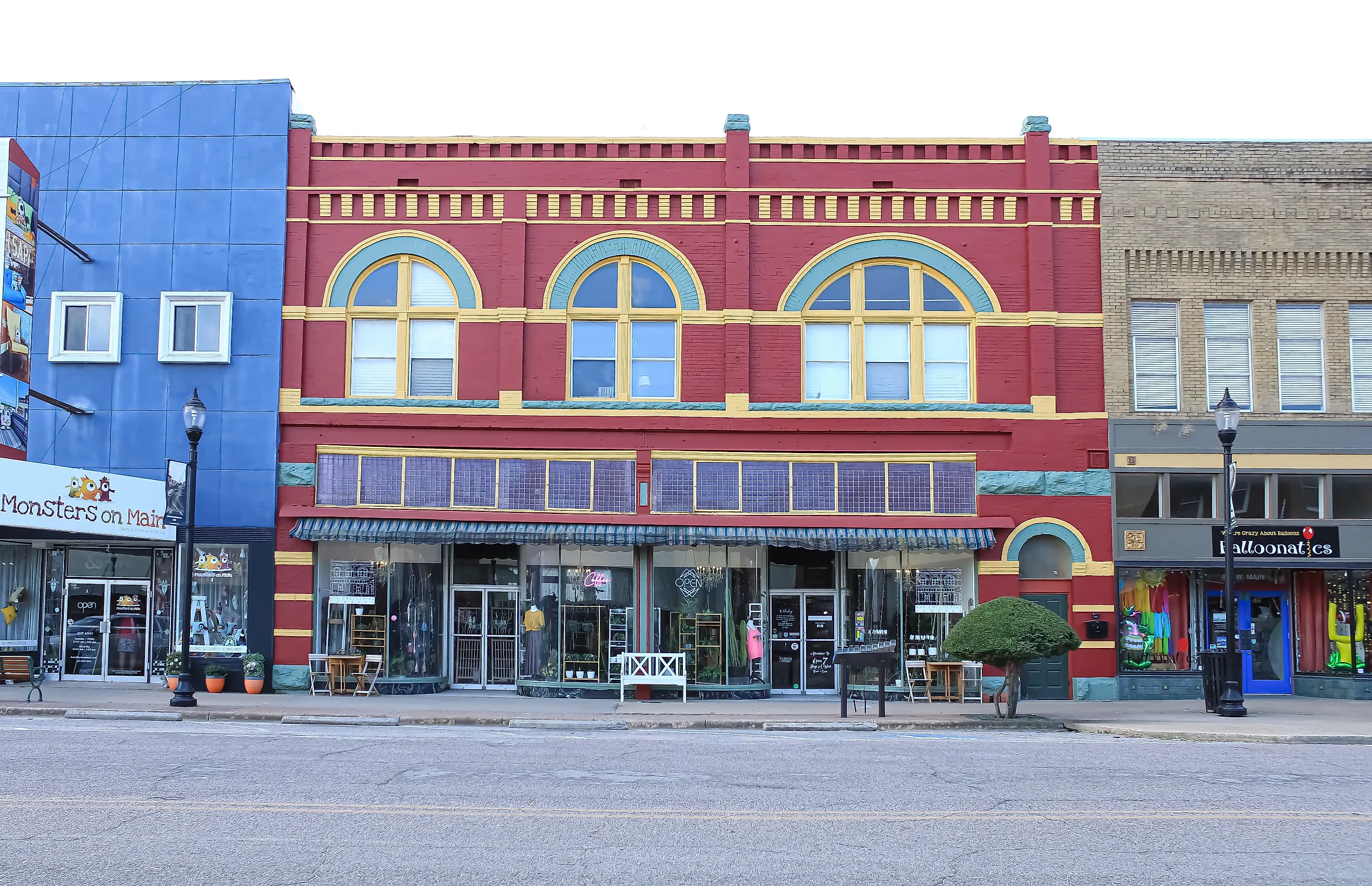
12 Most Hospitable Retirement Towns In Texas
To find the most hospitable retirement towns in Texas, we skipped the boomtown glitter and followed the weekday rhythm, which was opening the café at 6:30, which square fills on a Tuesday, and where the river trail still hosts the same walking club year after year.
We weighted towns with walkable courthouse squares, riverwalks and lake edges, farmers markets with real vendors, and festivals that survive because locals keep showing up. The 12 ahead aren’t chasing spectacle; they reward routine, neighborliness, and the small infrastructure of daily life that makes retirement feel less like a finish line and more like a standing invitation.
Brenham
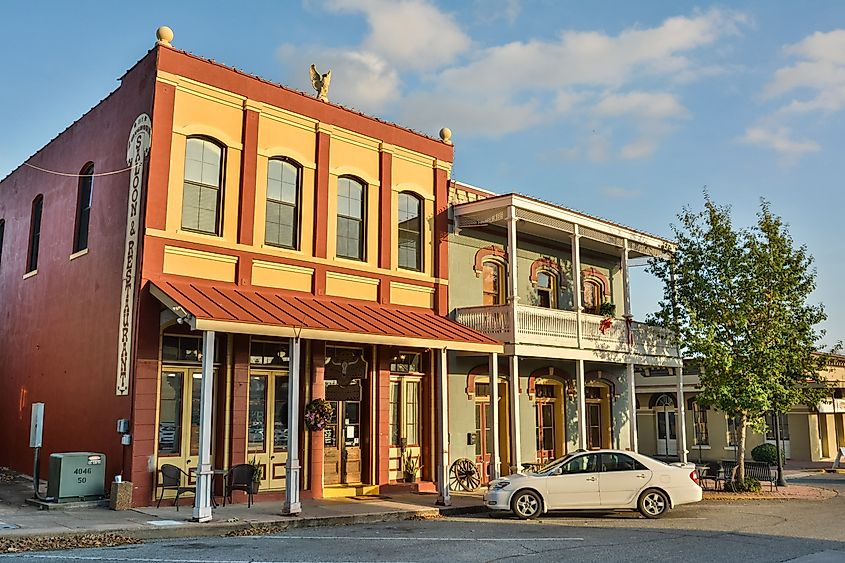
Brenham is best known as the home of Blue Bell Creameries, where locals still refer to the original 1907 factory as simply “the creamery.” But this Central Texas town, set among Washington County’s rolling pastures, offers more than nostalgia and ice cream. The population remains under 20,000, which helps preserve its steady pace, walkable downtown, and unpretentious community culture. The restored 1925 Simon Theatre sits at the center of town life, hosting classic films, luncheons, and live acts beneath its original proscenium arch. On any given Saturday, the Brenham Farmers Market in the shade of Baylor Street serves not just vegetables but neighborhood conversation.
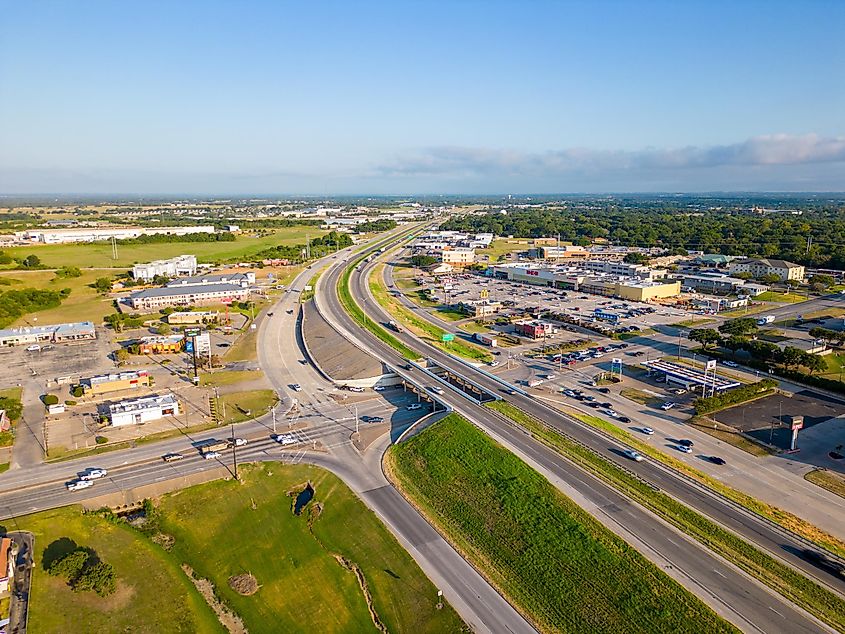
Visitors can take a scoop tour at Blue Bell’s historic facility, then walk over to Must Be Heaven, where old-fashioned counter service and house-made pies draw retirees and high schoolers alike. Across downtown, the Brenham Heritage Museum inside the 1916 post office features military relics and early settler artifacts that make the town’s German roots visible. Just east of downtown, Fireman’s Park offers a carousel pavilion built in 1910 that still operates each summer. In spring, when wildflowers bloom across nearby fields, locals gather at the Antique Rose Emporium, part nursery, part picnic lawn, part de facto meeting ground for Brenham’s older crowd.
Wimberley
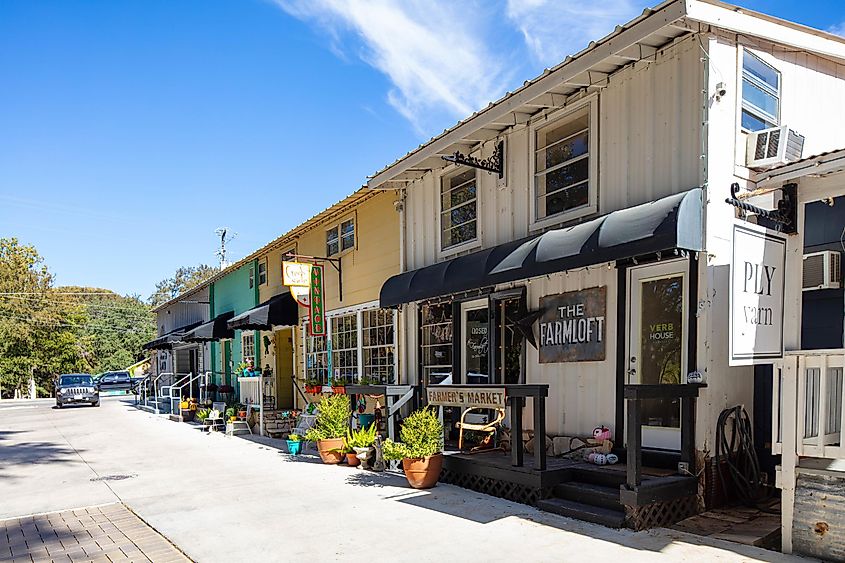
Wimberley sits at the meeting point of Cypress Creek and the Blanco River, but its identity runs deeper than its water. The town has no stoplights, yet every first Saturday from March to December, over 450 vendors fill the Wimberley Lions Field for Market Days, one of the oldest outdoor markets in Texas. Artists and woodworkers drive in from Austin and San Antonio, but the regulars are mostly locals, many retired, who sell quilts, furniture, and hot sauce from pop-up tents beneath the oaks. The creek winds through the center of town, where low water crossings outnumber bridges.
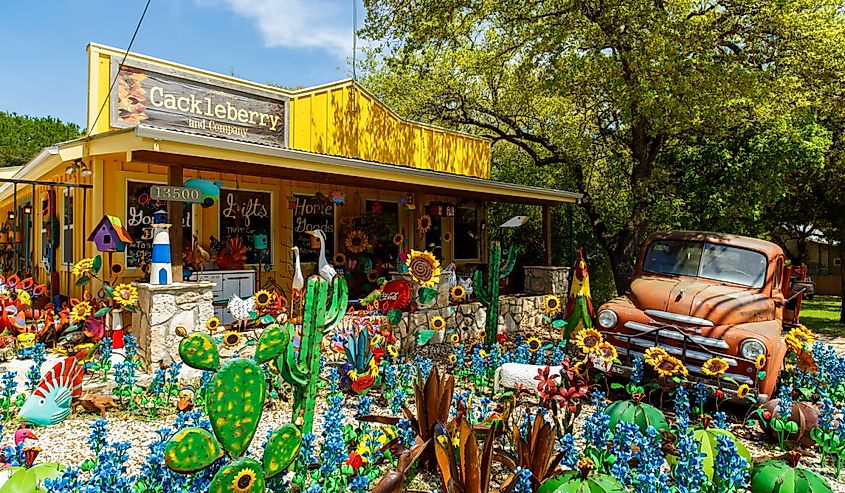
Blue Hole Regional Park anchors the eastern side of Wimberley with swimming lanes carved into limestone banks and mowed picnic lawns framed by tall cypress. A few miles north, the glass-walled Chapel in the Hills sits open to the public, with wooden pews that look out over Devil’s Backbone ridge. In town, Ino’z Brew & Chew has live music on a back deck that overlooks the creek, and old-timers gather at the Wimberley Café for biscuits and black coffee by 7 a.m. Jacob’s Well Natural Area now limits swimming, but volunteers still lead geology walks past the spring, one of the deepest underwater caves in Texas.
Port Aransas
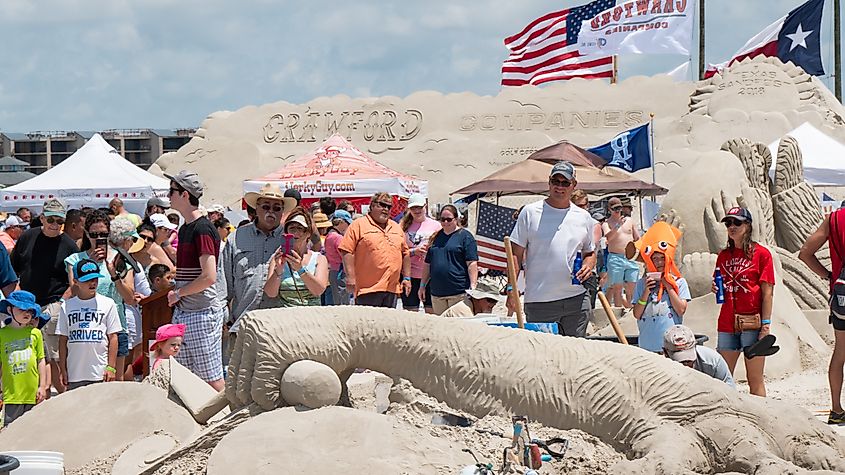
Port Aransas is the only town on Mustang Island and has relied on ferries as a main access point since the 1930s. The island’s isolation helped shape a year-round population that skews older, especially in winter when northern retirees return to the same RV pads, golf carts, and corner tables at Coffee Waves. Residents track tides, not traffic. Birders rotate shifts at the Leonabelle Turnbull Birding Center, where guided boardwalk walks begin at 9 a.m. sharp and often end with a heron sighting or a discussion about which alligator is nesting where.
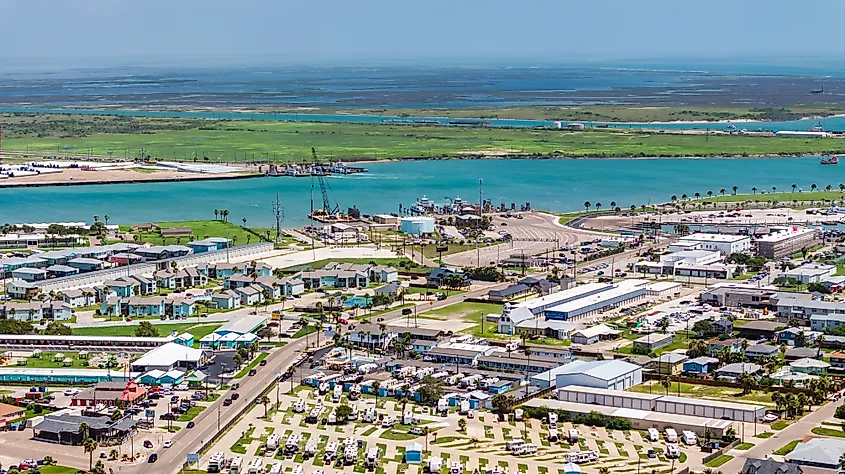
The beach itself is drive-on, and longtime residents still stake out familiar mile markers with folding chairs and radios. The Port Aransas Museum, inside a restored 1900s kit house, maintains archives of the hurricanes, shrimping fleets, and ferry strikes that shaped the town’s memory. Locals fish Horace Caldwell Pier at dawn, or meet for shrimp baskets at Moby Dick’s before sunset. During SandFest in April, temporary sculptures rise and collapse with the tide, but the event doubles as a reunion for seasonal residents who return annually.
Rockport
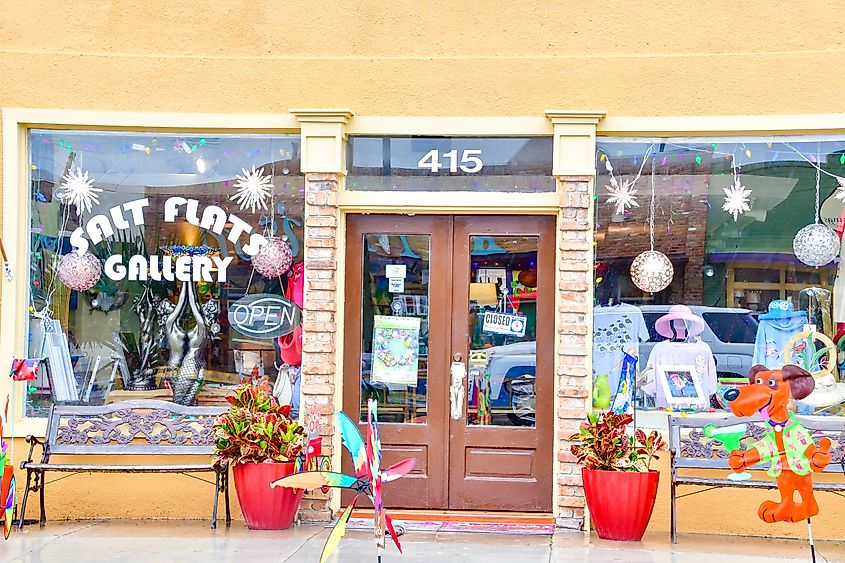
Rockport has one of the only certified Blue Wave beaches in Texas, meaning its shoreline meets strict environmental and accessibility standards. The beach is calm and protected, with palapa-style umbrellas spaced along the sand, and a seawall promenade used as much for walking groups as fishing. The town’s charm is tied to its resilience. Hurricane Harvey devastated the area in 2017, but long-term residents rebuilt quickly and anchored around the same institutions.
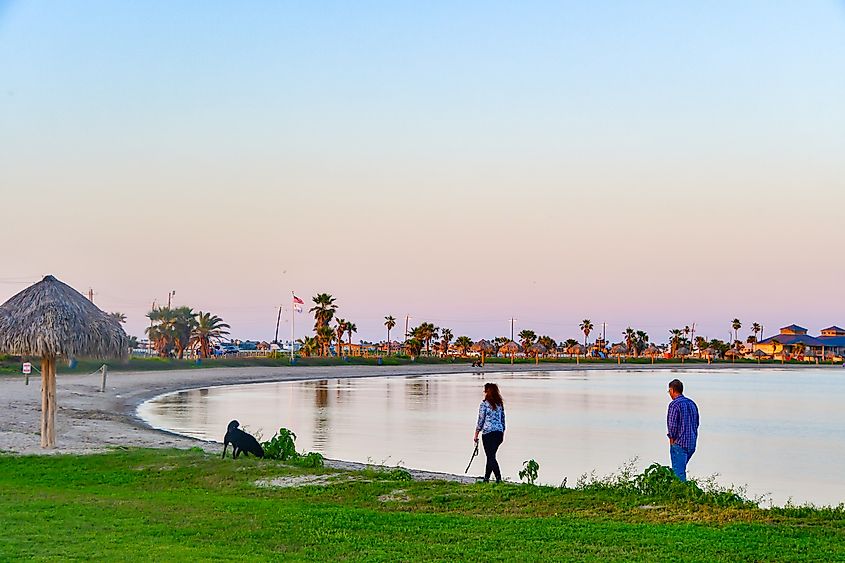
The Rockport Center for the Arts reopened in 2022 with galleries, sculpture gardens, and workshops for full-time and seasonal residents. Two blocks away, Latitude 28°02' serves as the standard lunch spot for gallery goers and Rotary Club meetups. Veterans Memorial Park sits on the bay and offers a covered pier used by winter anglers and sunrise walkers alike. At Paradise Key Dockside Bar & Grill, retirees pull up on golf carts and boats to eat blackened drum and listen to weekend bands.
Granbury
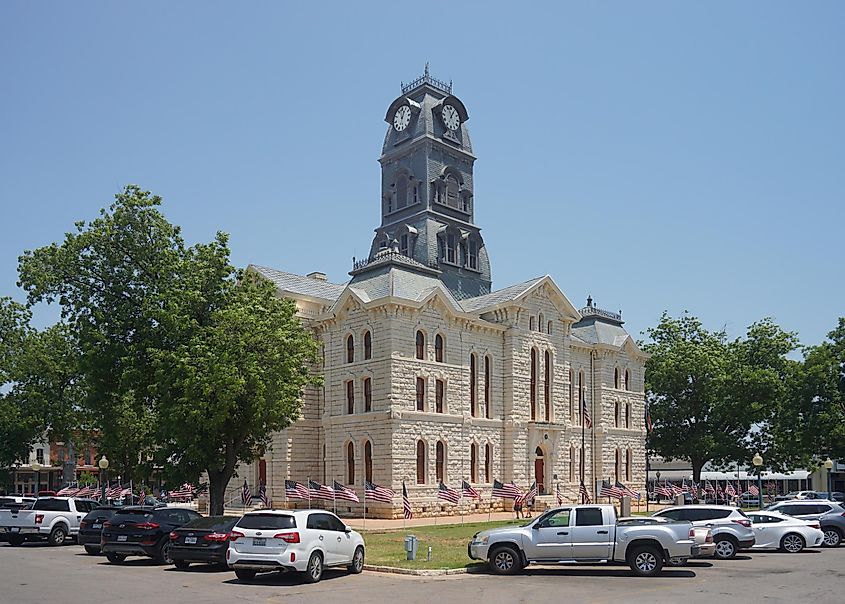
Granbury was the first Texas town to have its courthouse square listed on the National Register of Historic Places, and its limestone facades still mark the center of life. Retirees make up a third of the population, many of whom moved here for Lake Granbury but stayed for the square’s routines, first-run shows at the restored Granbury Opera House, Tuesday coffee at The Pearl Street Station, and monthly wine walks hosted by D’Vine Wine. The square’s wide sidewalks and central green make it easy to linger between errands, appointments, or conversations.
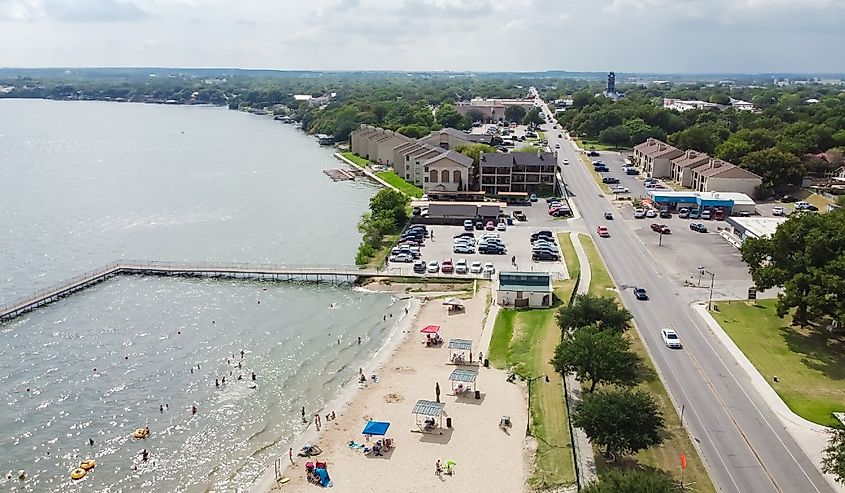
Granbury City Beach Park brings swimmers and paddleboarders to a protected inlet beside the Hilton Garden Inn, where a stretch of imported sand meets a permanent thatch of umbrellas. Locals watch fireworks here each Fourth of July, and seniors gather under the pavilion every Thursday for yoga and potlucks. The Hood County Museum, inside the old jailhouse, keeps detailed records of Jesse James sightings; some locals still claim he lived here under an alias. Across the lake, Stumpy’s Lakeside Grill hosts low-key fish fries on a dock lit by string lights.
Marble Falls
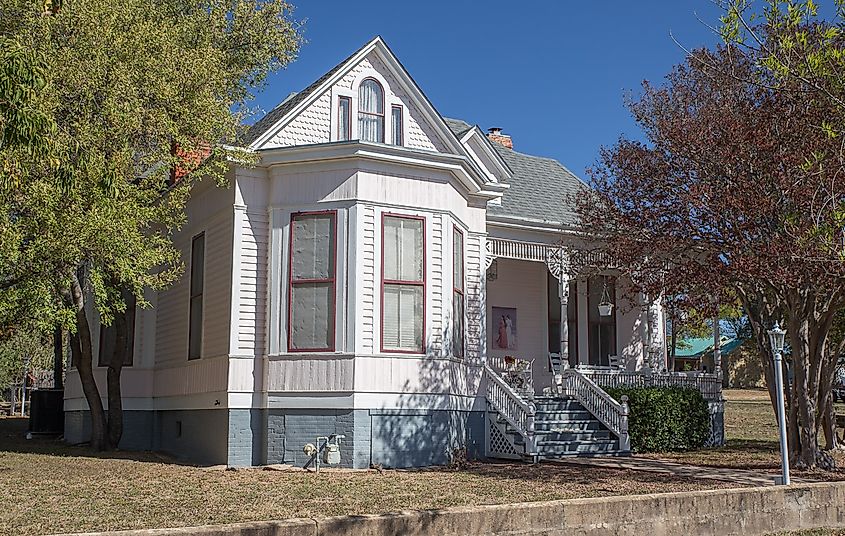
Marble Falls was named for the limestone outcroppings that once cascaded across the Colorado River, now submerged beneath Lake Marble Falls but still visible during drought. Retirees settle here for the lake, but stay for the town’s accessibility. Walkers and cyclists use the Lakeside Park Trail to cross under the US 281 bridge and loop around Johnson Park, where holiday events like Walkway of Lights stretch from November through December. Most locals know the park staff by name. Community dances and church groups use the pavilion year-round.
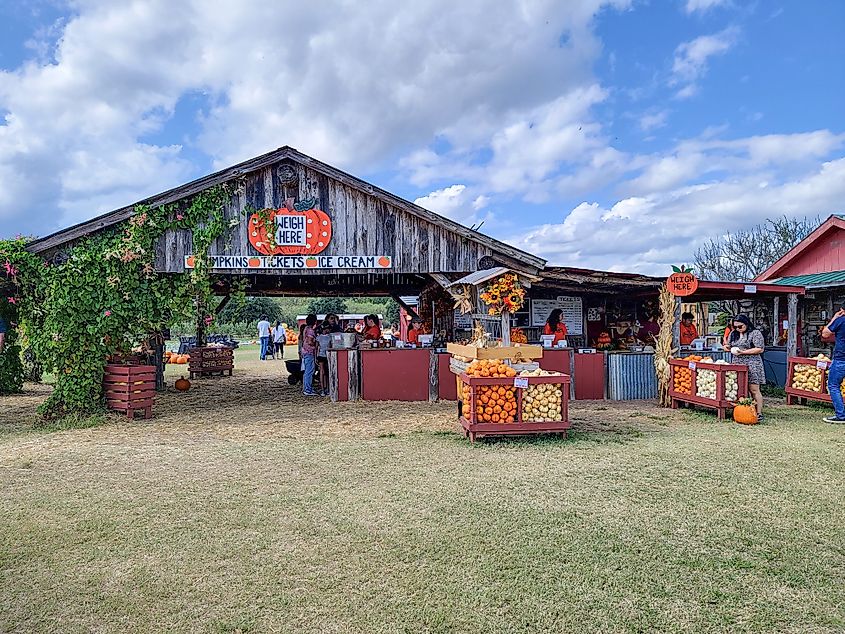
Blue Bonnet Café has served meringue pies and chicken-fried steak since 1929 and remains a hub for early risers, especially during Friday morning coffee groups. The Falls on the Colorado Museum, which is located inside the old granite schoolhouse, keeps documents on the town’s former textile mill and hydroelectric history. On Main Street, Smartie Pantz hosts painting classes for all ages, including monthly seniors-only sessions. Residents return again and again to the same tables, shops, and trailheads.
Boerne
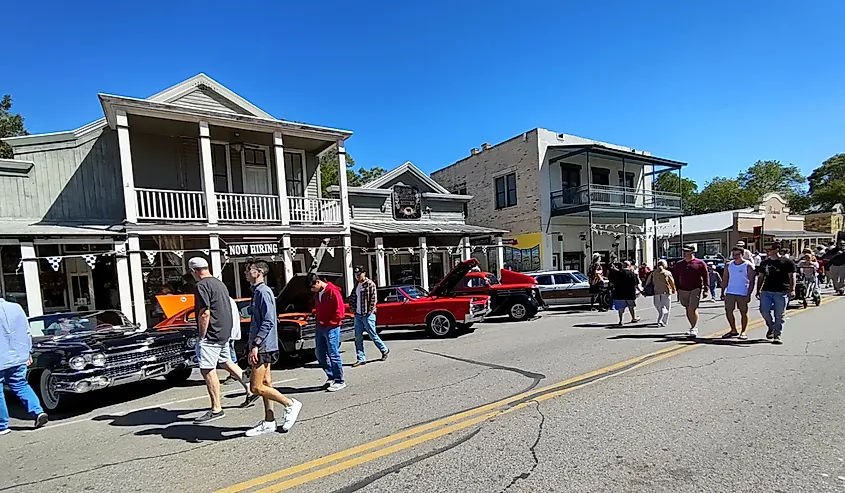
Boerne was founded by German freethinkers in the 1850s, many of whom were physicians, abolitionists, and writers fleeing political unrest. That intellectual streak remains. The town supports two independent bookstores, Dienger Trading Co. and The Boerne Bookshop, and hosts a monthly Abendkonzerte band performance on Main Plaza. The Hill Country Mile, a walkable stretch through downtown, includes more than 80 locally owned businesses where retirees make up a reliable weekday customer base. Boerne Grill (Daily Grind) serves as a morning anchor for many who live within golf cart range.
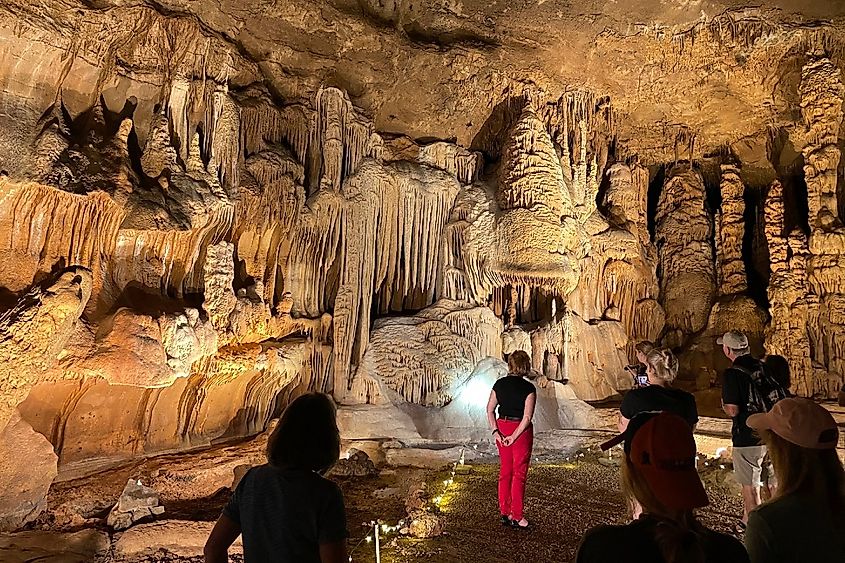
Cibolo Center for Conservation operates Herff Farm, where Saturday markets include cooking demos and seed exchanges that draw a steady crowd of master gardeners and local volunteers. Across the street, the Trail at Cibolo Creek connects to River Road Park, where benches overlook a stocked stream shaded by cypress trees. Upstairs at Boerne Grill, afternoon chess games unfold between retirees and local students. At night, the Patrick Heath Public Library hosts lectures, foreign film screenings, and music recitals in the amphitheater. Many residents relocated from San Antonio or Houston and describe Boerne less as an escape than a return to routines, civic groups, familiar weather, and neighbors who wave from porches.
Kerrville
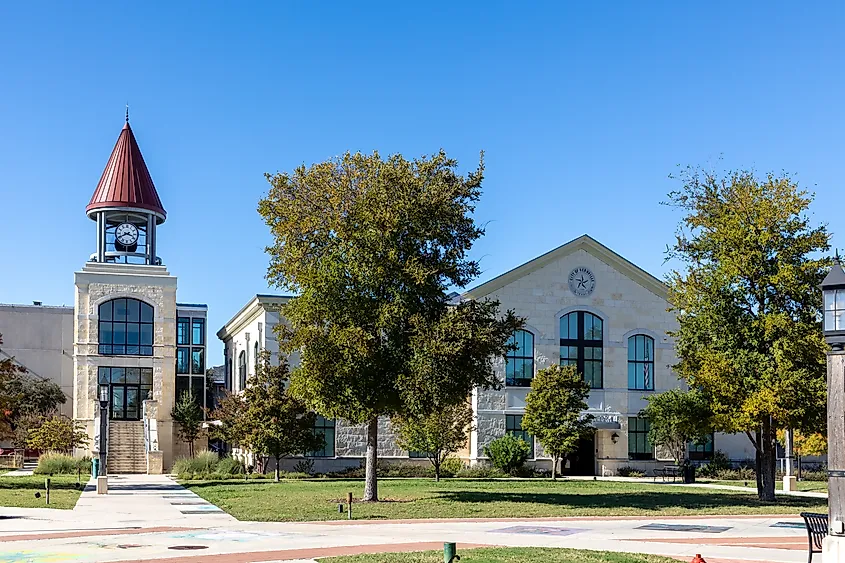
Kerrville hosts the longest-running folk music festival in North America, and many of its early performers retired nearby. The town is built along the Guadalupe River, which bends through its center and shapes everything from parks to porch views. The River Trail spans over six miles and links Louise Hays Park to the Riverside Nature Center, where retirees help manage pollinator gardens and native plant walks. The city’s Parks Department maintains free community pickleball courts under the Sidney Baker bridge, where early morning matches start before the traffic picks up.
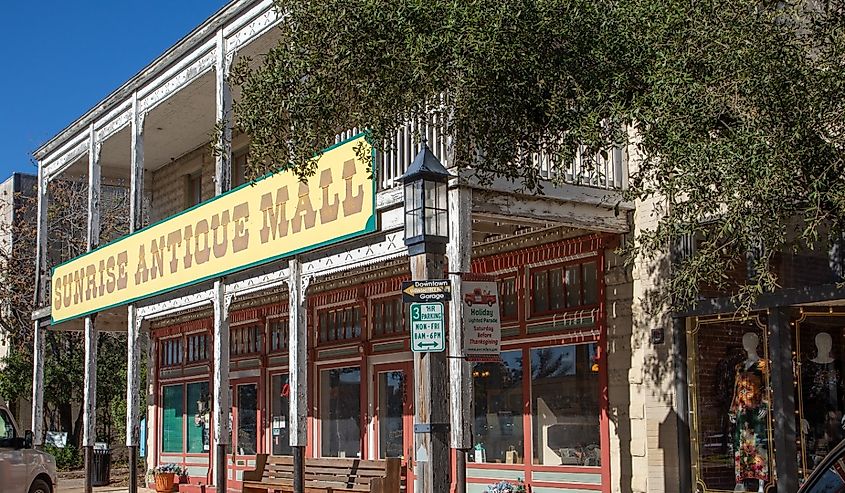
At Pint & Plow Brewing Co., locals gather for coffee as early as 7 a.m., and stay through lunch for soups, local news, and open laptops. The Museum of Western Art exhibits works from the Cowboy Artists of America and runs monthly lectures, often attended by retired ranchers who recognize scenes from memory. Francisco’s, a restaurant inside a 1920s hotel lobby, serves tortilla soup and chicken salad to a steady crowd of courthouse workers and Rotary members. The Cailloux Theater anchors the nighttime calendar with chamber music, local opera, and Hill Country Youth Orchestras.
Fredericksburg
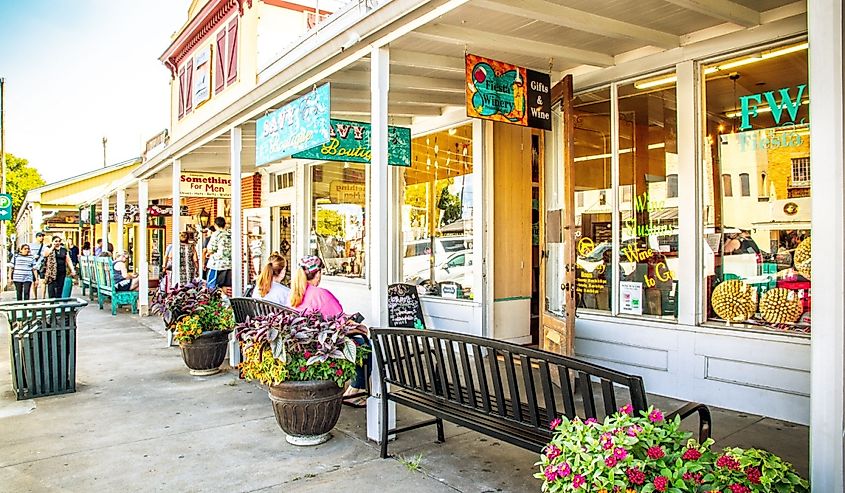
Fredericksburg’s founding charter included a peace treaty between German settlers and the Comanche, brokered without weapons or interpreters. That agreement still defines the town’s culture, independent, orderly, and built on mutual respect. The Vereins Kirche, an octagonal replica of the original 1847 community hall, stands in the center of Marktplatz and hosts everything from photo exhibits to quilting displays. The surrounding square includes benches, a bell tower, and restrooms used by weekday walkers and weekend marketgoers alike.
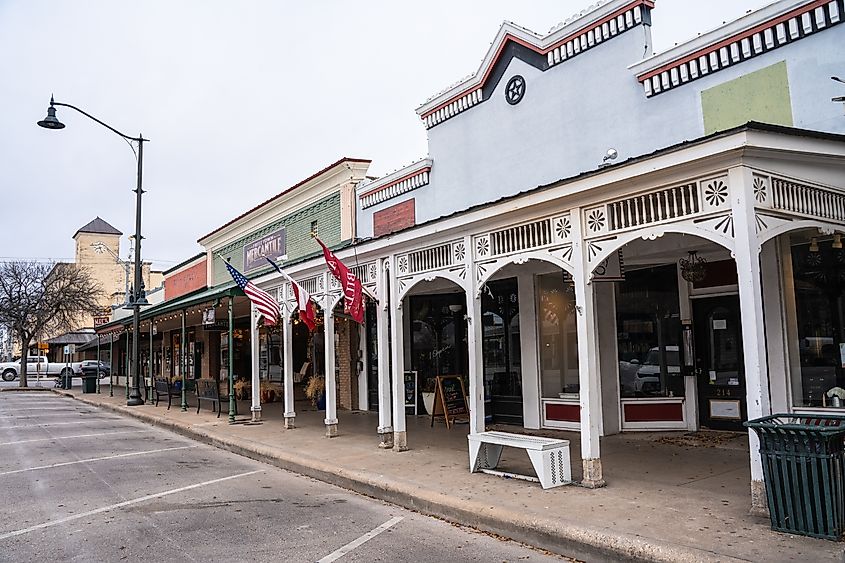
The National Museum of the Pacific War spans six acres and includes an outdoor plaza, a restored combat zone, and archives visited regularly by veterans and docents. Down Main Street, the Fredericksburg Pie Company opens only three days a week, selling out of peach praline slices before noon. Enchanted Rock State Natural Area lies 17 miles north, where retirees often make early climbs up the granite dome and return home before the midday heat. Becker Vineyards, a short drive east, offers weekday tastings in a reproduction 19th-century German stone barn, with retired couples often pouring wine and leading tours.
Nacogdoches
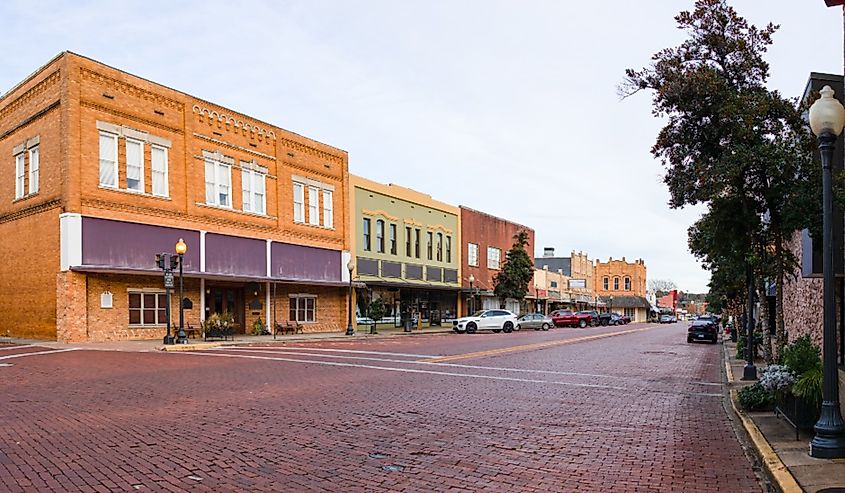
Nacogdoches calls itself the oldest town in Texas, but its oldest residents often refer to it simply as home. The red-brick streets downtown follow trails once used by Spanish missionaries and Caddo traders. The Durst-Taylor Historic House, built around 1835, sits near the center of town and operates as a working farmstead, where volunteers, many retired, tend heirloom crops and give soil workshops. The Fredonia Hotel, reopened after decades of dormancy, now anchors the square with a diner, piano bar, and poolside film nights.
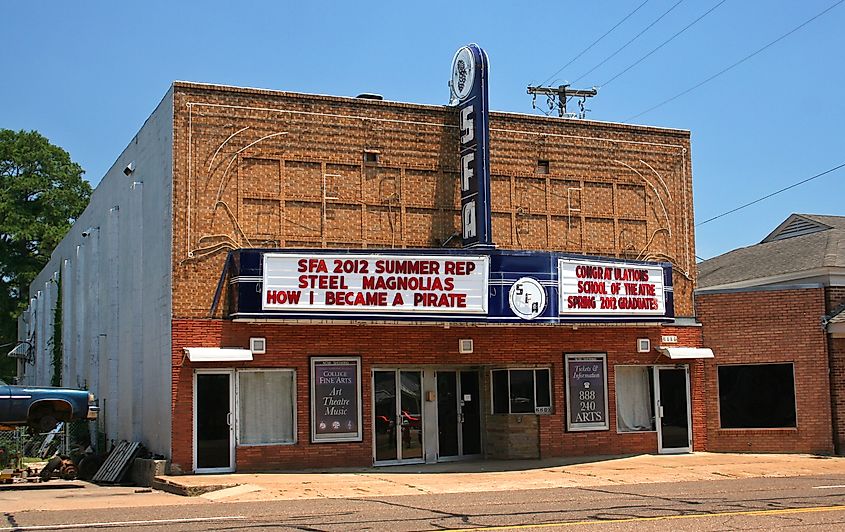
Stephen F. Austin State University supports the Ralph W. Steen Library, where seniors attend author talks and history lectures year-round. The Ruby M. Mize Azalea Garden, located on the university grounds, holds over 7,000 azaleas and serves as a walking loop for locals during bloom season. Nine blocks away, Dolli’s Diner runs morning service starting at 6 a.m., with regulars occupying the same booths they’ve used for years. Millard’s Crossing Historic Village, a privately owned collection of relocated 19th-century buildings, includes a chapel, print shop, and barn used for storytelling nights and bluegrass jams.
Alpine
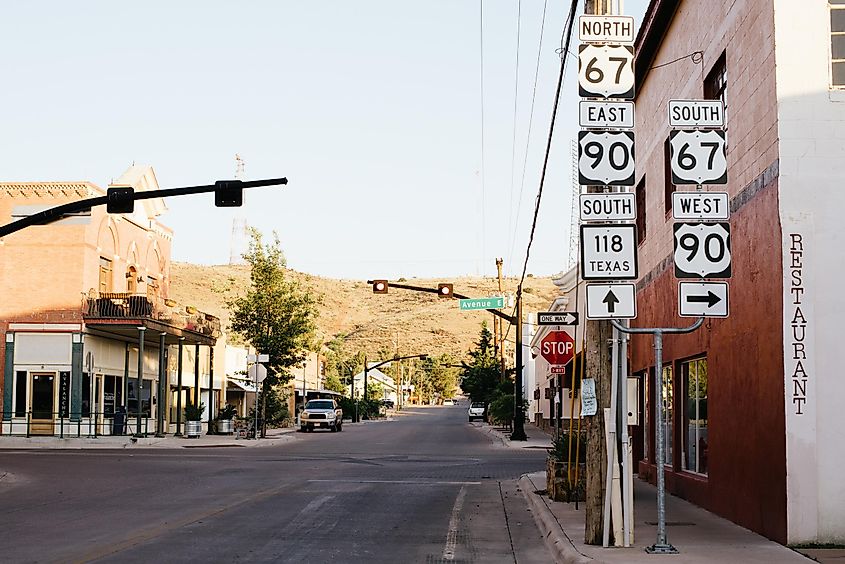
Alpine sits at 4,475 feet, higher than Denver, and its elevation gives it cooler summers and stargazing that draws astronomers from across the country. Amtrak stops in town three times a week, and many retirees use the train for visits to El Paso or San Antonio. Sul Ross State University keeps the town active, with retired faculty often teaching continuing education courses or helping at the Museum of the Big Bend. The museum’s Trappings of Texas show combines Western art and working gear, with artists and ranchers often sharing the same floor space during opening weekend.
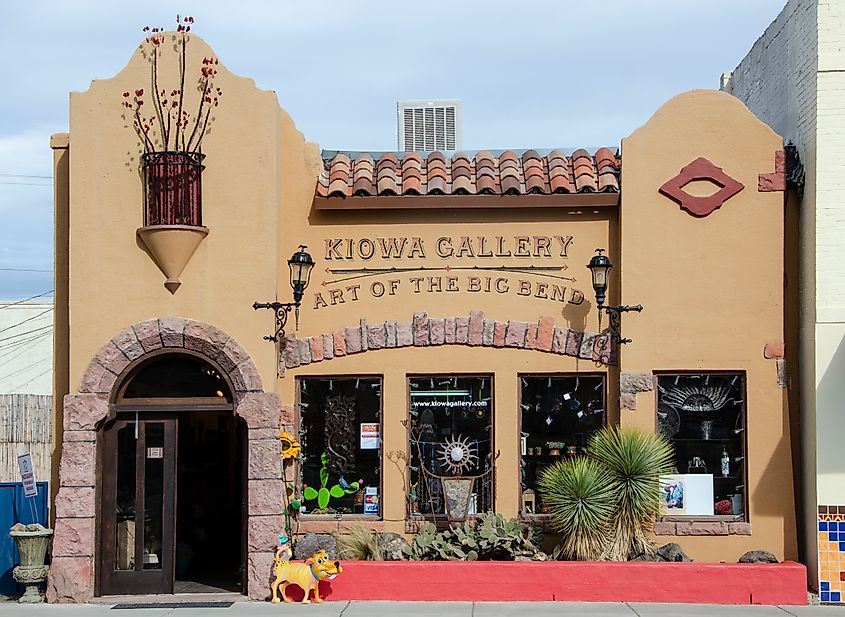
The Alpine Public Library runs a Books & Brews night at Cedar Coffee Supply, where retirees and grad students sit at long tables and trade paperbacks. The Kiowa Gallery on Holland Avenue sells regional photography and woven goods, with a backroom used for art talks and poetry nights. Kokernot Field, built in 1947 with local stone, still hosts baseball games in summer under light towers that date to the original construction. Across town, visitors hike Hancock Hill behind the university to reach “The Desk,” a steel office desk planted into the rock face in the 1980s and maintained ever since by anonymous locals.
Denison
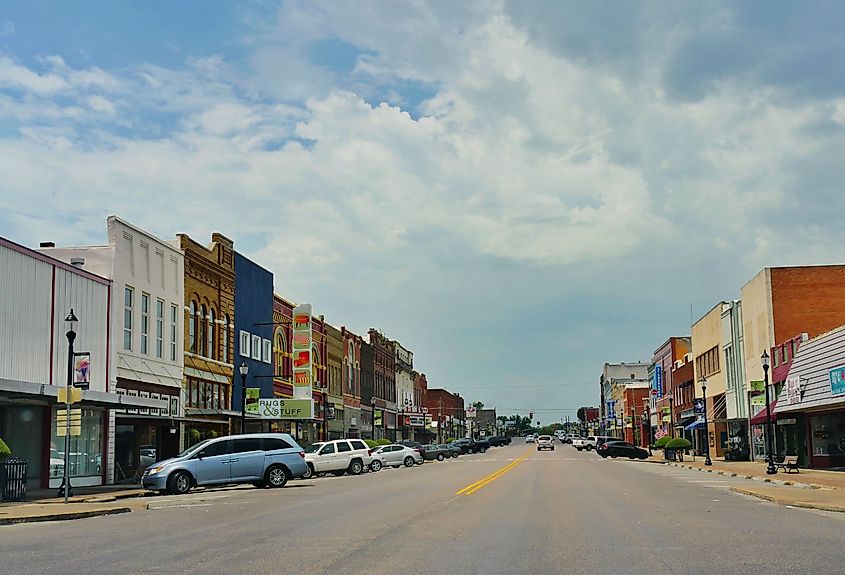
Denison is the birthplace of Dwight D. Eisenhower, but its deeper identity was shaped by the Missouri-Kansas-Texas Railroad, which brought musicians, merchants, and craftsmen to this stretch of north Texas in the 1870s. Retirees now gather on Main Street for Music on Main, a free Friday concert series held outside Heritage Park each summer. The Eisenhower Birthplace State Historic Site draws a steady stream of veterans, and many locals volunteer as docents or event organizers. The old Katy Depot now operates as a rail museum, with benches out front used for early morning coffee by retired railway workers.
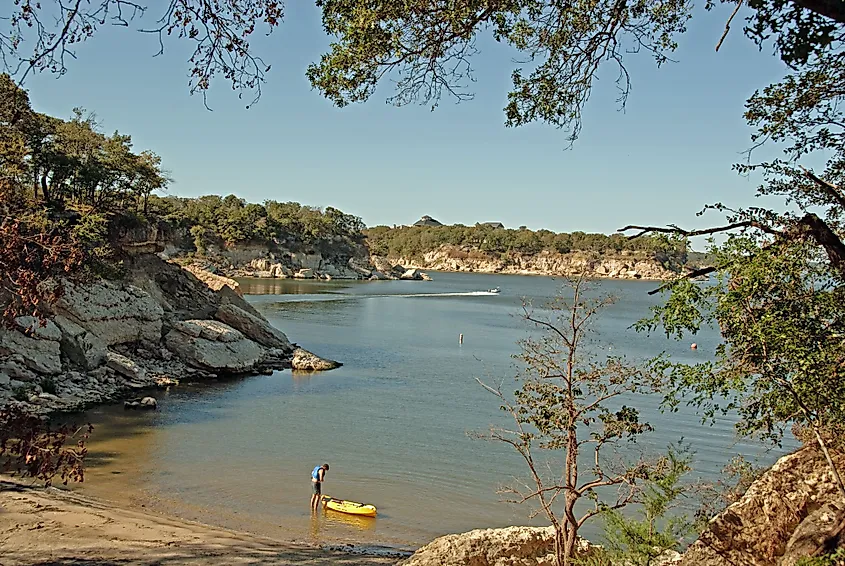
Waterbound retirees fish from the Eisenhower Yacht Club on Lake Texoma or meet for lunch at Huck’s Catfish, where catfish and hushpuppies are served on metal trays and extra tartar sauce is expected. The Denison Public Library hosts daily bridge groups, low-impact yoga, and regular author talks in a meeting room named after a former librarian. CJ’s Coffee Café runs a roundtable every morning for locals who read both The Herald Democrat and The Wall Street Journal. On Saturday mornings, the farmers market on Chestnut Street opens with handbell music or a fiddle solo, and regulars show up early for eggs and conversation.
Hospitality in Texas isn’t staged; it’s measured in doors, familiar names, and calendars that fill with farmers markets, concerts, and bird walks. These twelve towns favor routine over spectacle: coffee at dawn, river trails at noon, and lights on square after dark. Clinics are close, parks are used, volunteers show up. Retirement here reads less like retreat and more like membership, steady, local, and durable enough to carry a life forward.
